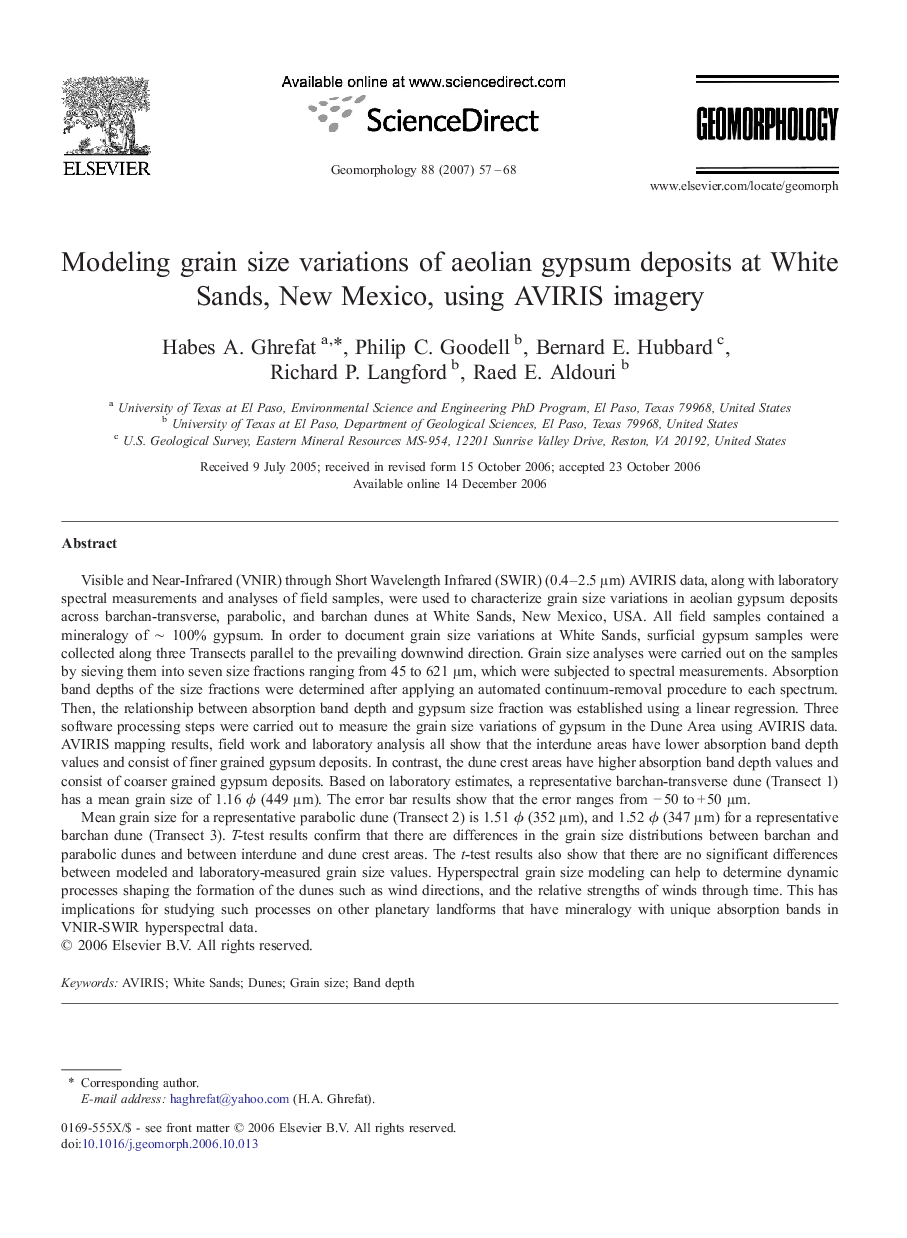| کد مقاله | کد نشریه | سال انتشار | مقاله انگلیسی | نسخه تمام متن |
|---|---|---|---|---|
| 4687135 | 1635577 | 2007 | 12 صفحه PDF | دانلود رایگان |

Visible and Near-Infrared (VNIR) through Short Wavelength Infrared (SWIR) (0.4–2.5 μm) AVIRIS data, along with laboratory spectral measurements and analyses of field samples, were used to characterize grain size variations in aeolian gypsum deposits across barchan-transverse, parabolic, and barchan dunes at White Sands, New Mexico, USA. All field samples contained a mineralogy of ∼ 100% gypsum. In order to document grain size variations at White Sands, surficial gypsum samples were collected along three Transects parallel to the prevailing downwind direction. Grain size analyses were carried out on the samples by sieving them into seven size fractions ranging from 45 to 621 μm, which were subjected to spectral measurements. Absorption band depths of the size fractions were determined after applying an automated continuum-removal procedure to each spectrum. Then, the relationship between absorption band depth and gypsum size fraction was established using a linear regression. Three software processing steps were carried out to measure the grain size variations of gypsum in the Dune Area using AVIRIS data. AVIRIS mapping results, field work and laboratory analysis all show that the interdune areas have lower absorption band depth values and consist of finer grained gypsum deposits. In contrast, the dune crest areas have higher absorption band depth values and consist of coarser grained gypsum deposits. Based on laboratory estimates, a representative barchan-transverse dune (Transect 1) has a mean grain size of 1.16 ϕ (449 μm). The error bar results show that the error ranges from − 50 to + 50 μm.Mean grain size for a representative parabolic dune (Transect 2) is 1.51 ϕ (352 μm), and 1.52 ϕ (347 μm) for a representative barchan dune (Transect 3). T-test results confirm that there are differences in the grain size distributions between barchan and parabolic dunes and between interdune and dune crest areas. The t-test results also show that there are no significant differences between modeled and laboratory-measured grain size values. Hyperspectral grain size modeling can help to determine dynamic processes shaping the formation of the dunes such as wind directions, and the relative strengths of winds through time. This has implications for studying such processes on other planetary landforms that have mineralogy with unique absorption bands in VNIR-SWIR hyperspectral data.
Journal: Geomorphology - Volume 88, Issues 1–2, 15 July 2007, Pages 57–68